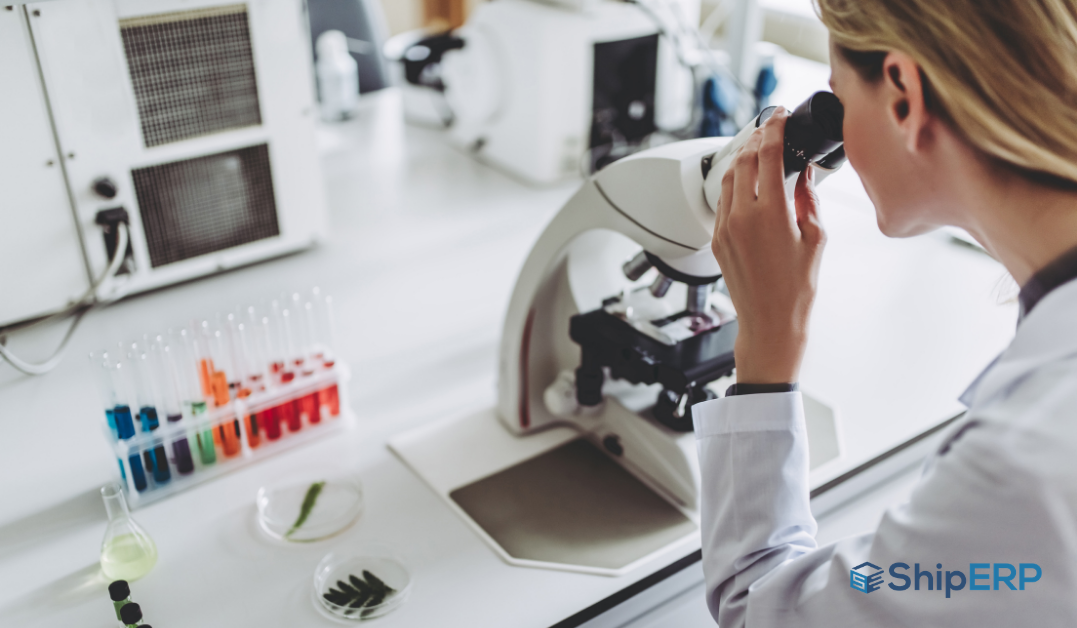
How to Overcome Life Sciences Supply Chain Challenges
As market forces such as security regulations, industry mandates, and customer demands change, constant pressure is put on the supply chain to remain dynamic, agile, and resilient. The life sciences industry is among the most affected industries.
Let's examine how the life sciences supply chain challenges brought about by the ever-evolving market forces under the microscope.

A Closer Look into the Life Sciences Industry
The life sciences industry, from its namesake, encompasses companies that provide products and services with an effort to improve the lives of human beings and other living organisms. These entities and industries include, but are not limited to:
- Pharmaceuticals
- Biotechnology
- Medical devices
- Biomedical technologies
- Nutraceuticals
- Cosmeceuticals
- Food processing
The importance of the life sciences industry is unquestionable. However, with the constant changes in the interplaying market forces, it might be at risk. Among the life sciences industry, some pressing supply chain challenges are finding the right logistics provider.
It's crucial to find a logistics provider who knows how to handle important life science products and deliver them to customers on time. For example, pharmaceutical products are sensitive to various factors, neglect, and mismanagement from the contracted logistics provider, resulting in faulty, damaged, and ineffective goods.
Although finding the right logistics provider is essential to overcoming the life sciences supply chain challenges, it is only the surface level of many other underlying market forces at play.
Challenges in the Life Sciences Industry
One of the most important lessons to know in business is that you must learn to bounce back quickly in such instances rather than learning to steer clear from trouble.
Climate change remains one of the most pressing issues facing the world. As natural disasters become increasingly stronger and catastrophic, global supply chains, particularly that of the life sciences industry, can be disrupted, causing adverse impacts on both businesses and humans alike.
Among the life sciences supply chain challenges, natural disasters particularly have pharmaceutical supply chains most vulnerable. In fact, in the United States, supply chain disruptions resulting from natural disasters can cause a 1 to 3 percent share price drop. This percentage is more impactful because 80 percent of the active pharmaceutical ingredients get produced or imported outside the US.
Aside from natural disasters, other life sciences supply chain challenges that cause similar damages are predictable and preventable disasters such as compliance violations and skills shortages. Although more controllable than natural disasters, these predictable and avoidable disasters can severely damage consumer trust, which only results in a wealth of future problems, particularly a significant decrease in revenue.

Overcoming Life Sciences Supply Chain Challenges
For businesses, particularly those inclined to the life sciences industry, supply chain challenges are part of life. However, companies must not take a defeatist stance against these challenges, for there are steps undertaken to prevent or mitigate its effects: Prepare, Respond, and Recover.
Prepare
You must develop a flexible framework to prepare for whatever supply chain challenges through constant surveillance and monitoring.
Taking advantage of state-of-the-art digital tools and analytics, you can employ digital surveillance across their supply chain and use systems to monitor product availability. You can ensure supply chain transparency and develop new supply chain patterns and a playbook to refer to when things go south.
Furthermore, it might be wise to form a cross-functional team of department representatives to have a unified, seamless communication channel to overcome life sciences supply chain challenges.
Respond
In times of disasters, natural or unnatural, communication is vital. It would be best to be transparent with your stakeholders and the public, especially when they get involved directly, such as product recalls. More than fearing the backlash, companies must always choose to step forward and take accountability. Communicating honestly and quickly can mitigate problems at hand that suppression and hiding cannot.
However important, communication is not enough. In this case, your response team must develop a recovery plan and bring it up with the leadership for implementation within three to five days of the unfortunate incident.
You must move with urgency and keep in mind that while timelines may vary, the recovery time objective must not take more than a few weeks to achieve.
Recover
Recovery looks different and is contingent on the type of disasters that companies are dealing with, whether natural or unnatural.
Although different, recovery from natural disasters or unnatural disasters rests on the same bottom line: people must be safe.
Only after ensuring safety must the companies undertake the necessary succeeding steps, such as employing the recovery plan. Recovering from an incident can also be the perfect time to re-evaluate existing stock levels and make adjustments based on disaster outcomes. Furthermore, as unnatural disasters, specifically safety or quality issues, damage trust, you must take steps to regain not only your stakeholders' trust but that of your customers.
As recovery plans may also contact the law, you must also develop a legal team to develop a solid legal strategy.

The Rise of Multi-Carrier Shipping Software
Apart from the three basic steps to overcome life sciences supply chain challenges, you can also turn to multi-carrier shipping software.
In essence, multi-carrier shipping software are platforms capable of automating and streamlining the entire spot freight process. You can conduct carrier quotes comparisons with such software, choose their preferred shipping partner, and initiate the spot freight process.
Furthermore, multi-carrier shipping software eliminates the need to vet each contract as it automates these regulations on every spot-buy. The life sciences industry holds the heaviest responsibility as peoples' lives depend on them. Thus, they must have everything to ensure the smooth delivery of life-essential products and services.
Sign up for a demo of ShipERP’s multi-carrier shipping software to meet your life sciences supply chain requirements.

